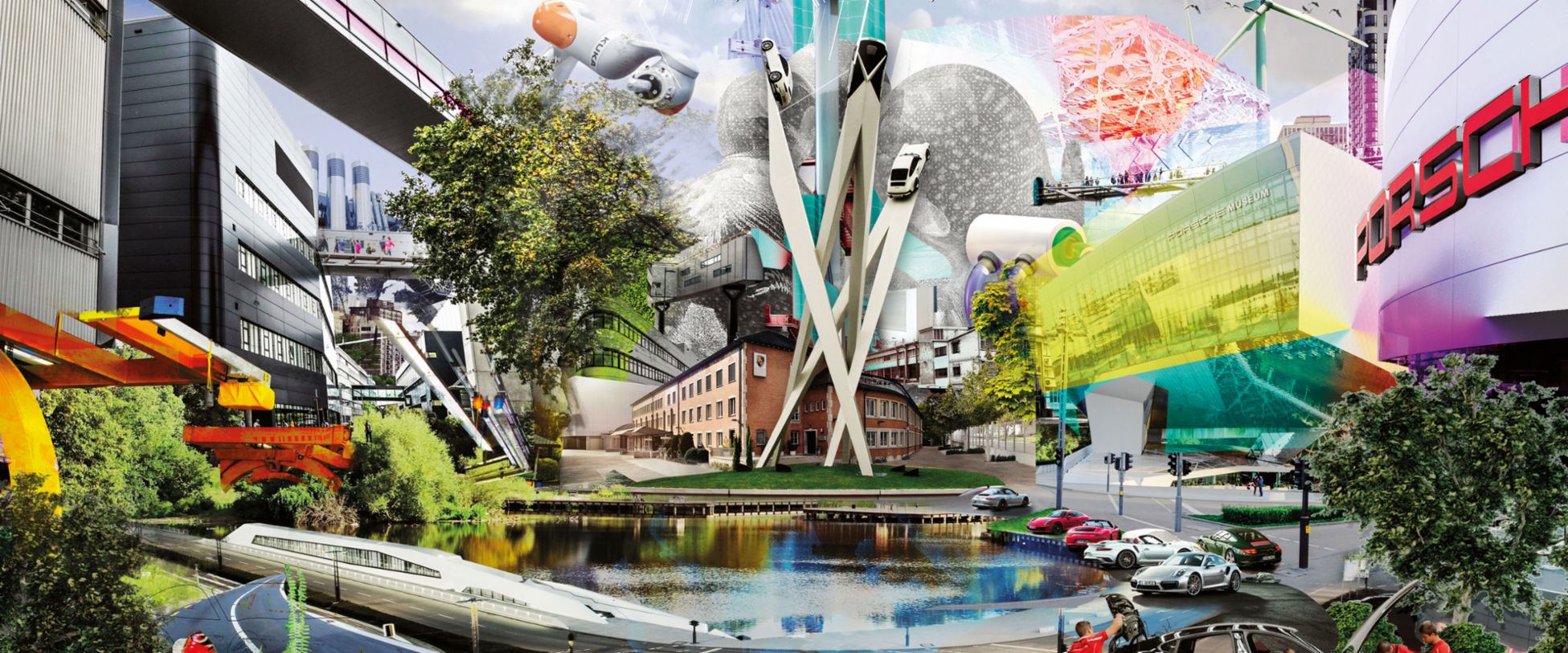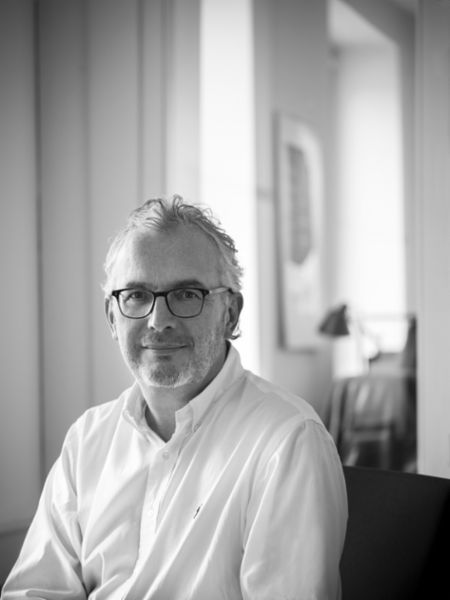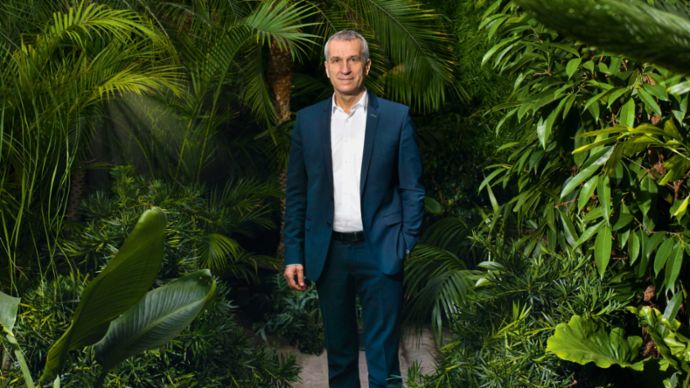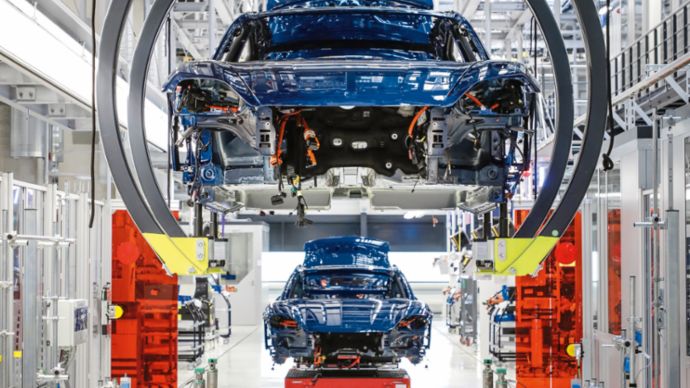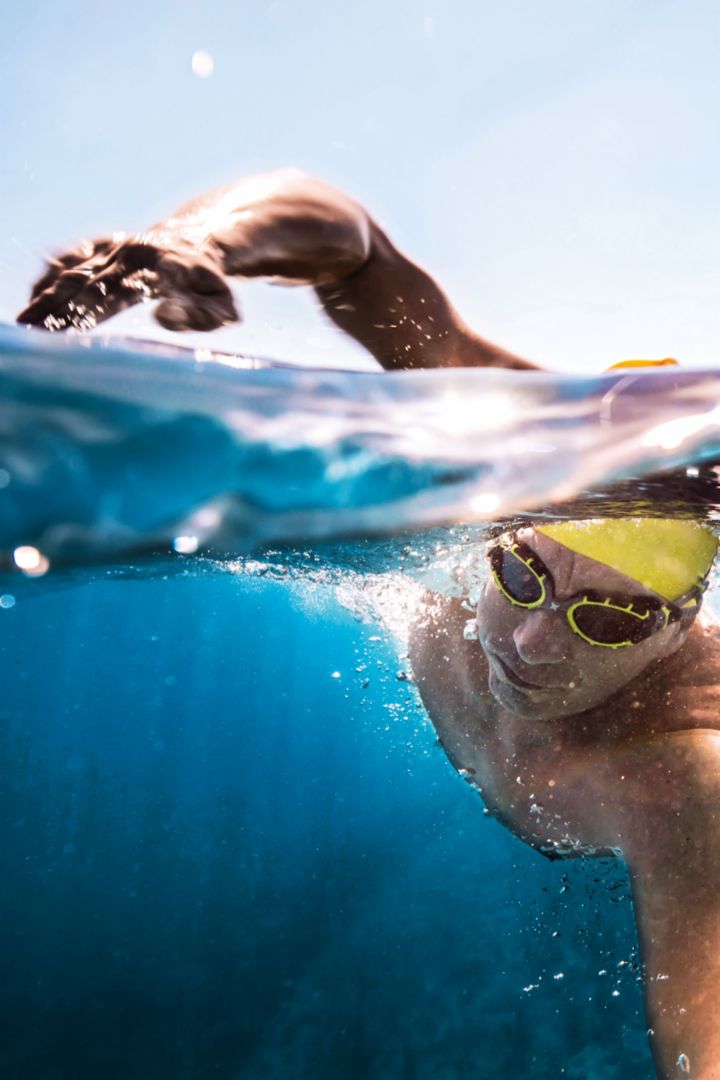Creating the Zero Impact Factory in Zuffenhausen
The Taycan, the first fully electric sports car from Porsche, is changing the production facilities in Zuffenhausen. The goal: the Zero Impact Factory.
Illustrations by James Dawe
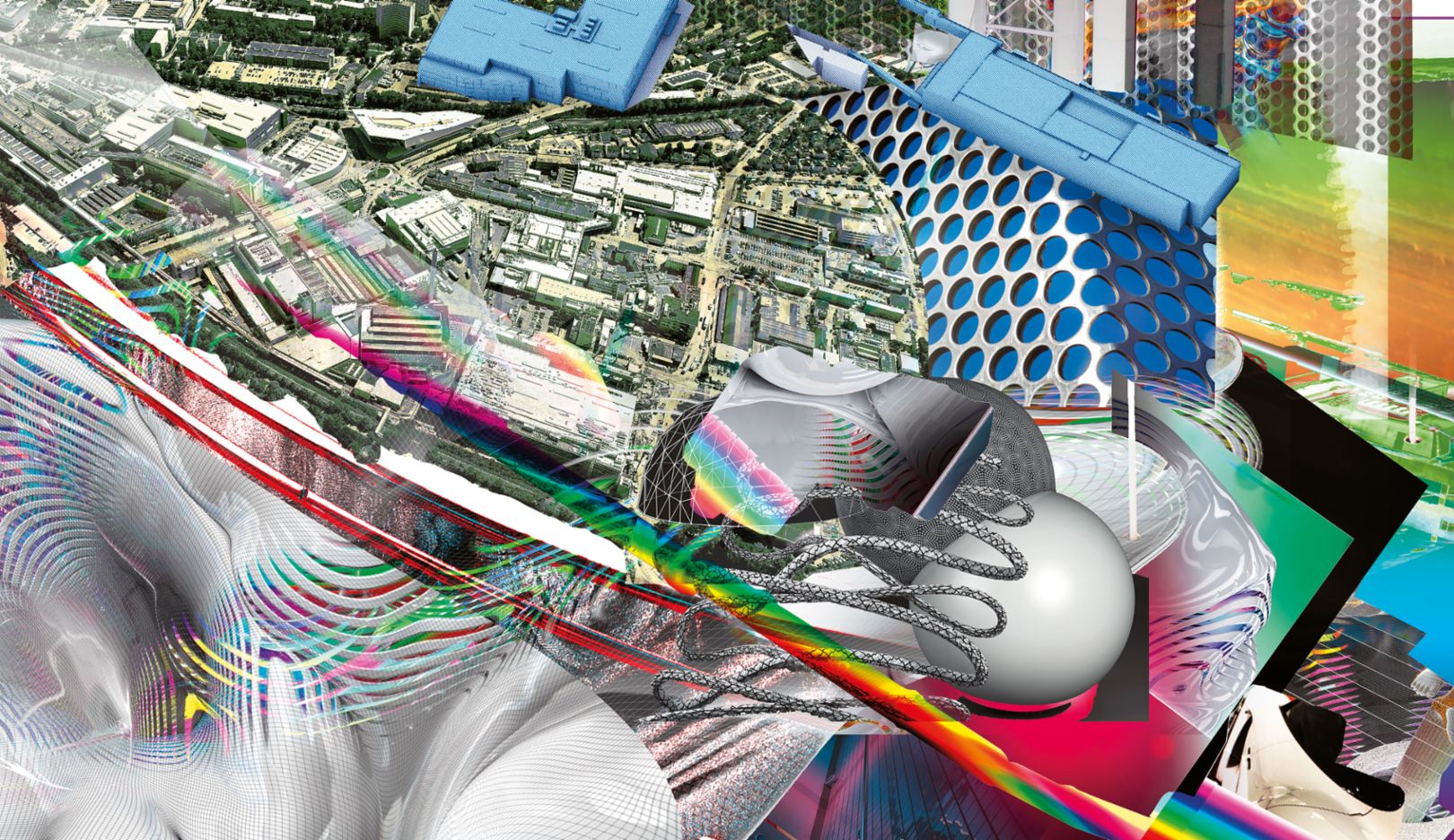
0.1 THE INVISIBLE FOREST
Over the past five years, Porsche has reduced the CO2 emissions per vehicle manufactured by over 75 percent. And that's just the beginning. In the future, the sports-car manufacturer wants to completely eliminate any environmental footprint in the production of its vehicles—an ambitious goal that the company has taken a major stride toward achieving with the production start of the Taycan in Zuffenhausen. The first fully electric Porsche is CO2-neutral—a feat accomplished by using renewable energy in the production process. The use of biogas saves thousands of tons of CO2 emissions annually. Forty-two thousand square meters of green roof area on the newly built production facilities make a positive contribution to the local climate.
An innovative aluminum facade reduces the formation of nitrogen dioxide, thanks to a special titanium-dioxide coating that acts as a catalyst, breaking down the pollutant particles exposed to sunlight and even low humidity into harmless water and nitrate. In an initial pilot project, Porsche is testing the NOx-absorbing high-tech facade over a surface area of 126 square meters on a building erected specifically for production of the Taycan. Based on current calculations, these panels are doing the environmentally friendly work of ten trees. If the results of the pilot project meet Porsche’s expectations, greater use could be made of this type of facade in Zuffenhausen. The result is something like an invisible, high-tech forest taking shape on the factory premises.
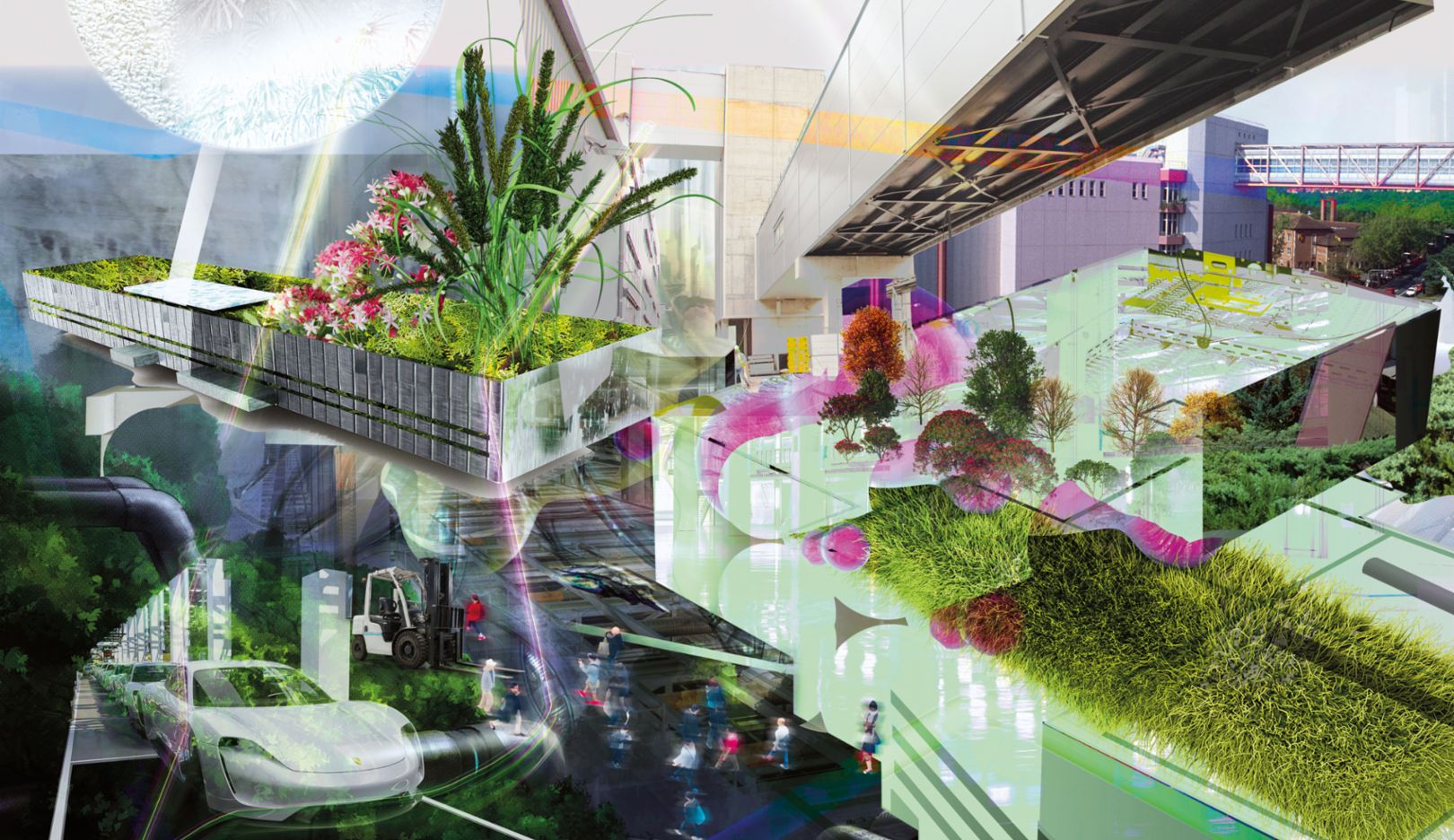
0.2 QUIET ZONES FOR NEIGHBORS
Noise is one of the forms of environmental pollution that affects people the most. Stress can have a considerable impact on health. This is why Porsche is particularly committed to targeting noise at the Zuffenhausen location. A new noise barrier almost 250 meters long at the northern edge of Plant 2 significantly lowers sound emissions for local residents, especially the background noise of logistics traffic. Another noise protection measure relates to the delivery and loading zone for the new Taycan. Moving this entire operation inside has greatly reduced noise levels.
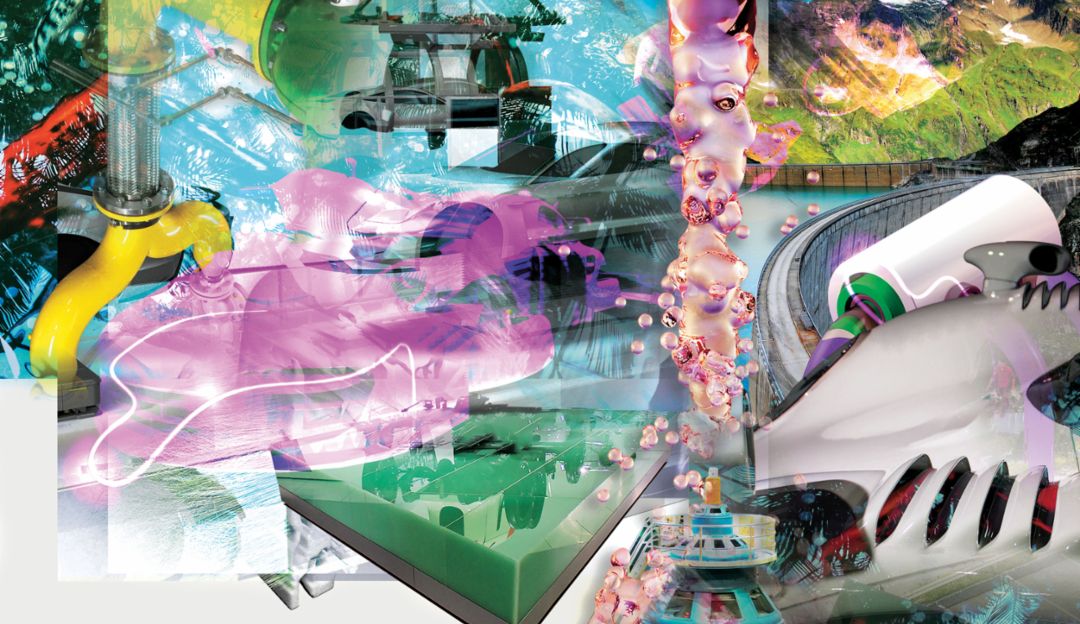
0.3 CONSERVING RESOURCES
Smart energy use that conserves resources will become a reality in the painting process for Taycan bodies. Regenerative afterburning (RTO) uses less gas to purify the exhaust air—meaning less unused energy is released into the environment. Meanwhile, a high proportion of the waste heat can be utilized during the bodywork drying process. The numbers: RTO saves 750,000 kilowatt hours per year, whichequates to over three hundred fewer tons of CO2 emissions.
Porsche also saves water during production of the Taycan. Closed-loop systems, multiple uses, and the careful handling of wastewater will all have an increasingly important role to play in the future. Water is also a source of energy for Porsche: hydropower enables a CO2-neutral power supply. The power used at all Porsche locations, incidentally, is 100 percent hydropower.
Annual & Sustainability Report 2018 of Porsche AG
https://newsroom.porsche.com/en/annual-sustainability-report-2018.html
